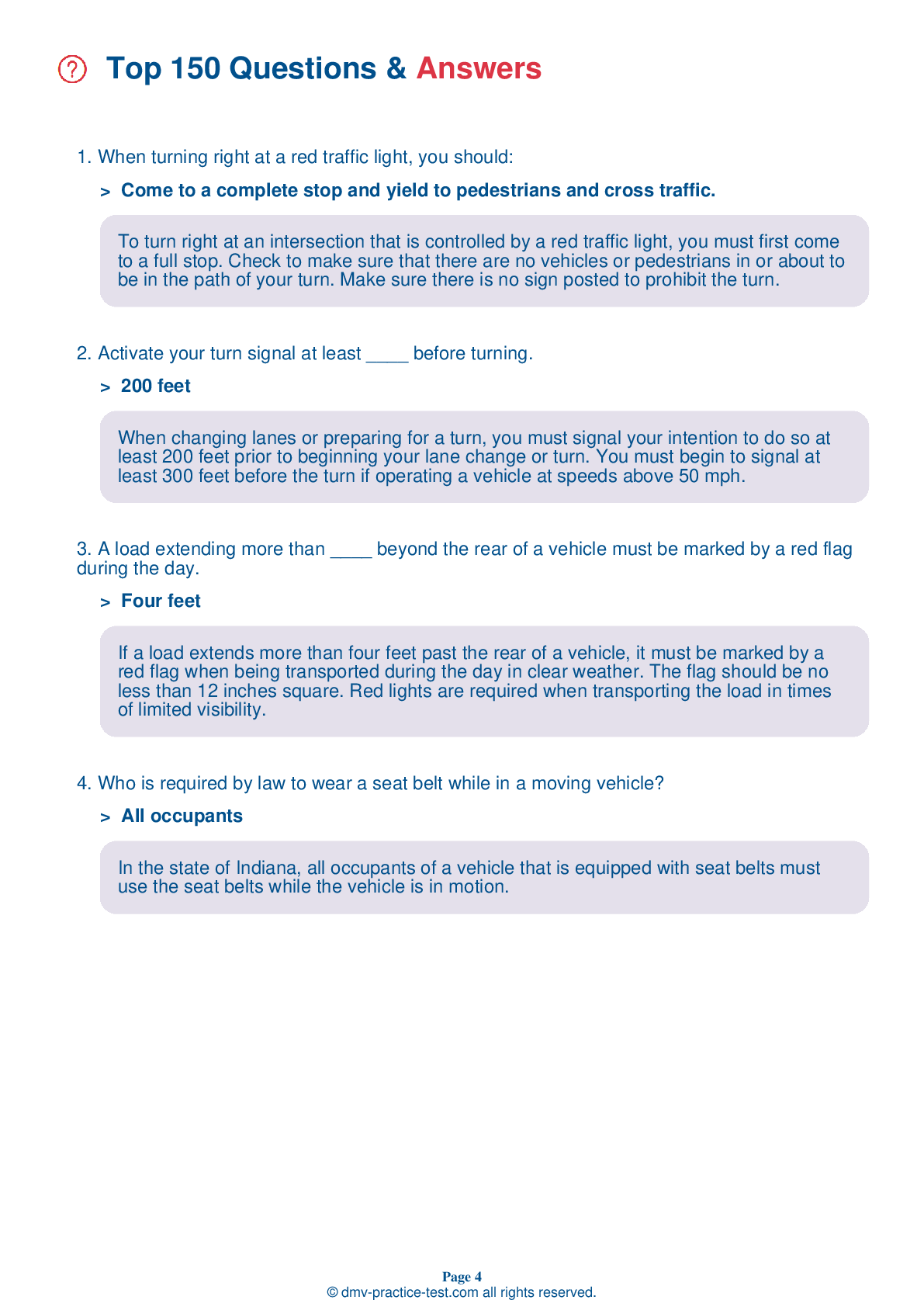FREE Indiana DMV Practice Test #11 Page 5 of 5
This set of Indiana DMV practise tests has been updated for January 2025. It includes questions based on the Indiana Driver Handbook's most significant traffic signals and laws for 2025. Use actual questions that are very similar (often identical!) to the DMV driving permit test and driver's licence exam to study for the DMV driving permit test and driver's licence exam.
On the practise exam, each question gets a tip and explanation to help you remember the concepts. The written component of the official Indiana DMV test will include questions about traffic rules, traffic signs, and driving statutes, as well as information from the Driver Handbook.
To obtain a passing grade, you must correctly answer 44 of the 50 questions. Take our DMV practise exam to help you prepare for your Indiana instruction permit or driver's licence.
The DMV exam is available in several languages.
Using any kind of testing assistance will result in an automatic fail, and the DMV may take additional action against your driver's licence, so stay away from it.
39 . When you see other drivers around you acting or reacting in anger:
When other drivers are behaving angrily, you should take action to physically and mentally distance yourself from the situation. Avoid making eye contact with them, or making body movements or gestures that could provoke them. Slow down, move over, or do whatever you safely can to put yourself out of danger.
40 . Round signs indicate:
Round signs warn drivers of an upcoming railroad crossing area. Drivers should use extra caution when approaching a railroad crossing.
41 . Do not pass:
You should never pass if there is an oncoming vehicle in the passing lane, if your view is blocked by a curve or hill, at an intersection, before or on a railroad crossing or bridge, or in any other no passing zone. Unless you are on the opposite side of a multilane roadway with a median or shared center turn lane, you may not pass a stopped school bus that has its flashing red lights activated.
43 . You are coming to an intersection with a flashing yellow light. You should:
A flashing yellow light means that you should proceed through the intersection slowly and with caution. Scan your eyes across traffic in both directions.
44 . This road sign means:

This sign indicate that the right lane ends ahead.
45 . A double solid yellow line down the center of a two-lane road indicates:
Yellow lines are used to separate traffic moving in opposite directions. Solid lines indicate that drivers are not permitted to pass.
47 . If two vehicles arrive to a four-way stop at the same time:
In general, vehicles at a four-way stop should proceed in the order that they arrive. However, if two vehicles arrive to the intersection at the same time, the vehicle on the left must yield the right-of-way to the vehicle on the right.
48 . A red flashing traffic light has the same meaning as a:
A red flashing traffic signal has the same meaning as a stop sign. When approaching a red flashing signal, come to a complete stop and proceed when it is safe to do so. A stop sign may sometimes also be posted where this signal is located.
49 . Drivers may not pass from either side of a ____ centerline.
A double solid yellow line down the center of a two-way road means that it is prohibited for traffic from either direction to cross the center to pass.
50 . When encountering an aggressive driver, you should:
If another driver is threatening you or intentionally driving dangerously around you, remain calm and try to put as much distance between the two of you as possible. Slow down and let them pass. Do not make eye contact and do not make obscene gestures.
See the exact questions that will be on the 2025 Indiana DMV exam.
99.2% of people who use the cheat sheet pass the FIRST TIME
LT gives us an insight on how the cheat sheet provided her with all the study questions she needed before taking her test.
Joe initially studied with the handbook and failed his test, he eventually found us online, studied and pass his test the first time around.





